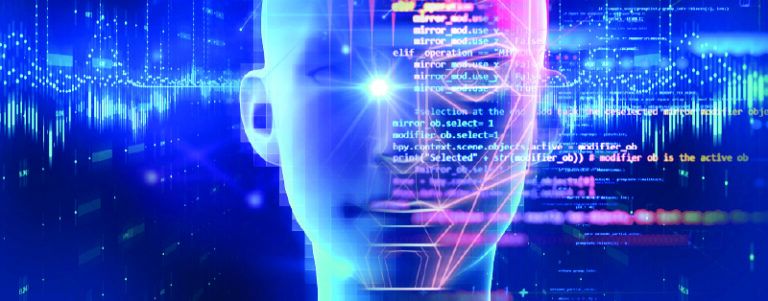What is Data Science and How to Excel in This Field?

What is data science? At its core, data science is a multidisciplinary field that merges statistics, computer science, mathematics, and domain-specific knowledge. It uncovers valuable insights from vast amounts of data. Data science is widely used in various sectors, from healthcare and finance to retail and technology. It helps drive crucial decisions, discover trends, solve complex problems, and inspire innovative solutions.
Besides being intellectually challenging and fascinating, data science offers significant career opportunities and financial rewards. As demand for skilled professionals continues to rise, data scientists enjoy competitive salaries, ranging from 9 lakh for junior roles to an impressive 43 lakh for lead positions (1). Consequently, for those interested in data analysis and problem-solving, data science presents a highly attractive career path.
To pursue a career in this field, you need a solid understanding of its educational requirements, essential skills, and job pathways. In this blog, we’ll explore everything you need to know to start your journey toward becoming a data scientist.
What is Data Science and Why Do We Need Data Science?
What is data science? Let’s proceed in a step-by-step manner.
Data science starts with the fundamental concept of data itself. But what exactly is data? It represents facts and figures that reflect information about various aspects of the world. These data points can come from numerous sources, including text, numbers, images, and sounds. Today, our daily interactions produce vast amounts of data. Every online search, social media post, or transaction contributes to the growing digital footprint. This vast, continuous creation of data is part of a larger phenomenon known as Big Data, which has become prominent with the mammoth expansion of the internet across the globe and novel technological development. Through Big Data, companies can observe global patterns, predict trends, and understand individual preferences. Incredibly, India produces 20% of the world’s digital data, highlighting the vast amount of information created each day (2).
Now, with this overwhelming amount of data, interpreting it meaningfully has become essential. Because raw data, without structure or analysis, lacks value and becomes a mere collection of facts. This is where what is data science becomes relevant. Put simply, it’s the art and science of deciphering data streams and transforming them into insights that inform decision-making. By applying statistical analysis, machine learning, and advanced computational techniques, data science translates the complex language of data into practical solutions. Some of the uses of what is data science include:
- Understanding customer behavior: Companies use data science to decode buying patterns, customer needs, and trends to offer better products and services
- Optimizing business processes: Data science enables businesses to refine their processes by identifying inefficiencies
- Predicting future trends: By analyzing historical data, companies forecast demand, helping them to stay ahead in the market
ALSO READ: The Top 20 Python Libraries Every Data Professional Should Know
Best Data Science Courses
Uses of Data Science
Now that you have a working idea of what is data science, let’s look at some of its practical applications.
1. Healthcare
In healthcare, data science plays a transformative role in patient care, diagnosis, and treatment planning. Through data analysis, hospitals can predict disease outbreaks, tailor treatment plans, and streamline patient management. For example, analyzing patient histories and genetic information enables personalized medicine, which significantly improves treatment outcomes.
2. Finance
Finance relies heavily on what is data science for fraud detection, credit risk analysis, and strategic investment decisions. For example, by examining transaction patterns and customer behavior, banks and financial institutions can detect anomalies that may indicate fraud. Additionally, predictive models assist in risk assessment, enabling smarter investment choices and loan approvals.
3. Retail
Retailers employ what is data science to understand consumer behavior, personalize marketing, and optimize inventory management. With the help of data, retailers identify purchasing trends, allowing them to adjust product offerings accordingly. Furthermore, targeted recommendations, made possible by data science, enhance customer experience and drive sales.
4. Education
In the educational sector, data science supports personalized learning, student performance tracking, and curriculum development. Schools and universities use data to monitor student progress, identify learning gaps, and develop customized educational approaches. This data-driven approach helps educators cater to each student’s individual needs.
5. Manufacturing
Manufacturers leverage data science to increase efficiency, reduce costs, and minimize downtime. Data analysis allows for predictive maintenance, identifying potential equipment failures before they occur. By monitoring supply chains and production cycles, companies optimize processes, reduce waste, and enhance productivity.
How Does Data Science Work?
Armed with insights into what is data science and what its real-life applications are, let’s take a bird’s eye view of the data science ecosystem. To do this, we need to break down the various processes and tasks that data science entails.
1. Collecting Data
This is the first tier of the data science ecosystem. Data scientists gather data from diverse sources, including databases, web servers, sensors, and surveys. Consequently, this data provides the raw material for further analysis. For instance, tools like Apache Kafka and Google BigQuery help streamline data collection, ensuring that data is both timely and relevant.
2. Data Processing (Cleaning & Transformation)
Once data is collected, it often arrives in unstructured or inconsistent formats, filled with inaccuracies. So, to remove inaccuracies, and inconsistencies, and address formatting issues, data scientists need to process it. That is, they need to cleanse it and transform it into well-organized and easily accessible data sets. This step ensures that the dataset is reliable and standardized, ready for in-depth analysis.
3. Statistical Analysis of Data
Statistical analysis is a crucial element in the ecosystem of data science. In essence, it helps uncover relationships, trends, and anomalies within the dataset. Through descriptive and inferential statistics, data scientists interpret data, finding correlations and insights that would otherwise remain hidden. This stage forms the backbone of hypothesis testing, critical to validating insights. Popular tools for statistical analysis include SPSS, R, and NumPy.
ALSO READ: What is the Data-First Approach? Does it Actually Help?
4. Data Visualization
Data visualization translates raw data into visual formats, making complex information easy to understand. Using graphs, charts, and dashboards, data scientists present insights in a way that stakeholders can readily interpret. Consequently, these visuals allow decision-makers to grasp key insights quickly, aiding in strategic planning and problem-solving.
5. Finding Patterns and Making Prediction
Once data is visualized and interpreted, data scientists proceed to pattern recognition and predictive modeling. This stage is where machine learning algorithms come into play. Whether predicting customer churn or forecasting stock prices, this predictive capability makes what is data science a powerful tool for decision-making.
Core Responsibilities of a Data Scientist
Data scientists handle diverse responsibilities that ensure meaningful insights emerge from data, such as:
1. Defining Objectives and Project Goals
Before any analysis begins, data scientists work closely with stakeholders to clarify objectives. For instance, they define project goals and establish Key Performance Indicators (KPIs) to measure success, ensuring the project aligns with business priorities.
2. Identifying and Selecting Data Sources
Data scientists determine which datasets are necessary for analysis. In essence, this step involves identifying relevant sources, whether from internal databases, public APIs, or external providers, to ensure comprehensive data coverage for accurate insights.
3. Data Collection and Integration
Data scientists gather data from diverse sources and consolidate it into a single, unified dataset. Hence, this requires data scientists to work with database management systems and various data integration processes, ensuring that data remains consistent and accessible throughout the project.
4. Data Cleaning and Transformation
Raw data is often messy and inconsistent. Data scientists clean and transform the data, removing errors, duplicates, and outliers. As a result, this ensures that data analysis occurs on a reliable, accurate dataset.
5. Applying Analytical Models
Once data is prepared, data scientists need to analyze it. Now, this is where machine learning models, statistical methods, or algorithmic techniques come into play. By using them, data scientists uncover patterns and generate predictions, forming the foundation for data-driven insights.
6. Reporting and Presenting Findings
Finally, data scientists compile their findings into reports, dashboards, or presentations. This is a crucial responsibility, as it translates technical insights into actionable recommendations for stakeholders, enabling data-informed decision-making.
Prerequisites for a Career in Data Science
A career in what is data science demands a strong foundation in several technical domains, each essential for navigating the complexities of data and deriving actionable insights. These skills enable data scientists to approach problems methodically and effectively, bringing raw data to life in ways that guide strategic decisions. Here are the core areas aspiring data scientists need to master.
1. Programming Languages
Programming skills are crucial for data science, and data scientists must be adept in languages that enable data manipulation, analysis, and modeling. In the domain of what is data science, some of the most popular languages include:
A. Python
Python is one of the most widely used languages in data science, prized for its readability and versatility. It offers a rich set of libraries. For instance, it has Pandas for data manipulation, NumPy for numerical computations, and Scikit-Learn for machine learning. Together, these libraries make it efficient to clean data, build models, and even visualize results. Additionally, Python’s compatibility with deep learning frameworks like TensorFlow makes it invaluable for projects that involve neural networks and advanced machine learning.
ALSO READ: 30 Power BI Interview Questions And An Expert Guide
B. R
Known for its strength in statistical analysis, R is popular among researchers and analysts focused on exploring and visualizing data. It provides extensive packages for statistical computing and data visualization, like ggplot2 and dplyr, allowing data scientists to create insightful graphics and conduct rigorous analysis. Furthermore, its flexibility in statistical modeling makes it a preferred choice for academic and specialized analytics tasks.
C. C/C++
Although less common than Python or R, C and C++ are critical for applications requiring high-performance computing. Because of their speed and efficiency, they prove ideal for tasks that demand real-time data processing, such as algorithmic trading and large-scale simulations. Data scientists skilled in C/C++ can create optimized code that runs quickly, which is crucial for high-stakes, data-intensive applications.
D. Java
Java’s robustness and scalability make it well-suited for building data infrastructure and backend systems. Commonly used in enterprise environments, Java integrates smoothly with big data frameworks like Hadoop and Spark. Furthermore, its scalability supports large-scale data projects, making it a valuable language for data engineering and backend data science roles.
2. Database Management
Data scientists deal with huge amounts of data, and this data is stored in various databases. Proficiency in database management ensures they can effectively store, organize, and retrieve data, which is essential for seamless data analysis. Hence, familiarity with relational databases (like MySQL and PostgreSQL) and NoSQL databases (like MongoDB) gives data scientists flexibility in handling structured and unstructured data. Managing data across these platforms enables data scientists to gather comprehensive datasets, ensuring that analysis is based on a broad, accurate picture of the data landscape.
3. Machine Learning
Machine learning lies at the heart of what is data science. In short, it powers the predictive models and algorithms that transform data into valuable insights. Through machine learning, data scientists can recognize patterns, classify information, and make predictions that inform strategic decisions. In essence, machine learning expertise allows data scientists to go beyond simple analysis, enabling them to design intelligent systems that continuously improve as they process more data. Hence, proficiency in machine learning is essential for data scientists. This involves understanding core algorithms, such as regression, clustering, and decision trees, as well as more advanced techniques like neural networks for deep learning.
4. Data Modeling
Data modeling is the process of structuring data logically, which is essential for organizing and understanding the relationships within data. In practice, it helps data scientists to design databases and build workflows that facilitate efficient data management. A well-constructed model allows data scientists to streamline the data flow, reducing redundancies and improving data integrity. This skill is particularly valuable in complex projects where multiple datasets or large data volumes are involved. Therefore, proficiency in data modeling is crucial for data scientists.
How to Become a Data Scientist
A structured path offers clarity and direction for those aiming to pursue a career in what is data science. This journey typically combines formal education, specialized training, and hands-on experience, each stage building on the last to equip candidates with the skills they need to excel.
1. School Education (10+2)
A strong background in mathematics, statistics, and computer science at the high school level forms the foundation for data science. For instance, mathematics and statistics introduce key concepts like probability, calculus, and linear algebra, all of which underpin machine learning algorithms and data analysis techniques; and early exposure to computer science develops basic programming skills and problem-solving abilities, which prove invaluable in later stages.
2. Bachelor’s Degree
A bachelor’s degree in a related field is the next step for most aspiring data scientists. For example, degrees in computer science, mathematics, statistics, or information technology provide a broad base of knowledge and practical skills. Some institutions now offer specialized data science programs at the undergraduate level, which can give students an early start with coursework specific to data analysis, machine learning, and data visualization.
ALSO READ: Data Analyst vs. Data Scientist: Differences You Need to Know
3. Master’s Degree
Many data scientists pursue a master’s degree to gain a more focused and advanced understanding of data science. Master’s programs in data science, analytics, or machine learning provide rigorous training in complex algorithms, predictive modeling, and big data handling. Consequently, this advanced knowledge and hands-on practice make candidates more competitive in the job market and ready for specialized roles.
4. Ph.D (Optional)
While a PhD is not mandatory, it can be highly beneficial for those interested in research or academia. To elaborate, doctoral studies provide an in-depth exploration of data science theories, allowing candidates to specialize in areas like artificial intelligence, deep learning, or computational statistics. Therefore, a PhD can open doors to research-intensive roles in tech firms, academia, or think tanks, where a deep understanding of data science fundamentals is crucial.
5. Certifications
Professional certifications validate specialized skills and enhance a candidate’s credibility. Here are some recommended certifications:
Foundational Certifications
- Microsoft Certified: Azure AI Fundamentals
- Open Certified Data Scientist (Open CDS)
- Certified Analytics Professional (CAP)
Core Data Science Certifications
- SAS Certified Data Scientist
- SAS Certified Advanced Analytics Professional
- IBM Data Science Professional Certificate
- Microsoft Certified: Azure Data Scientist Associate
Specialized and Advanced Certifications
- Cloudera Data Platform Generalist Certification (for those focused on the Hadoop ecosystem)
- Data Science Council of America (DASCA) Senior Data Scientist (SDS)
- Data Science Council of America (DASCA) Principal Data Scientist (PDS)
- TensorFlow Developer Certificate (for those specializing in deep learning)
Data Scientist Careers
Now that you have a clear idea of what is data science, what it entails, and have explored in detail how to become a data scientist, let’s look at the career paths that you, as a data scientist, can opt for. Rest assured, the field of data science offers a variety of career options, each with unique responsibilities and focus areas. Here’s a look at some prominent roles within the industry.
ALSO READ: What Does a Data Scientist Do?
1. Data Analyst
Data analysts play a crucial role in interpreting data and identifying trends. By analyzing datasets, they uncover insights that support business strategies and operational improvements. Analysts often present their findings through reports and visualizations, making it easy for stakeholders to understand key patterns and metrics.
2. Data Engineer
Data engineers are responsible for building and managing the infrastructure that powers data operations. They create data pipelines to collect, process, and store data efficiently, ensuring seamless data flow within organizations. Their work is essential for providing data scientists and analysts with accessible, reliable datasets.
3. BI Engineer
Business Intelligence (BI) engineers focus on transforming data into actionable insights. They develop tools and processes that improve data accessibility, allowing companies to make strategic, data-driven decisions. BI engineers work closely with both technical and non-technical teams to optimize reporting and analytics.
4. Machine Learning Engineer
Machine learning engineers build models that enable predictive analytics and automation. Their expertise lies in designing algorithms to learn from data and make accurate predictions. These professionals apply machine learning techniques to solve complex problems and create systems that continuously improve over time.
5. AI Specialist
AI specialists are experts in advanced data science techniques, creating intelligent systems that replicate human decision-making abilities. They work on cutting-edge projects, such as Natural Language Processing (NLP) and computer vision, bringing AI innovations to life in practical applications.
Frequently Asked Questions About What is Data Science
1. Who is a Data Scientist?
A data scientist is a professional skilled in extracting insights from data to drive business decisions. In essence, a data scientist’s task is to bridge the gap between data and actionable business insights, guiding informed choices.
2. What is the Difference between Data Science and Data Analytics?
Data science involves processing and interpreting unstructured data to drive decisions, while data analytics focuses primarily on examining structured datasets to identify trends.
3. What are the Applications of Data Science?
Data science has diverse applications, from image recognition and recommendation systems to fraud detection and targeted advertising. Furthermore, it is increasingly used in healthcare to manage patient data, logistics, speech recognition, and even airline route planning.
4. What Types of Problems Do Data Scientists Solve?
Data scientists address complex problems, such as assessing loan risks, optimizing resource allocation, and evaluating the effectiveness of online advertisements. By identifying patterns and trends in data, they help businesses solve practical issues, enabling more precise decision-making and efficient operations.
ALSO READ: How to Prepare for Data Engineer Interview Questions in 2024
In conclusion, data science is an exceptional career choice for individuals interested in analytics, innovation, and impactful decision-making. With the increasing demand for data-driven insights, data scientists are more sought after than ever, with over 122,000 positions listed on LinkedIn alone (3). If you’re eager to know more about what is data science and gain actionable insights on how to become a data scientist, consider joining Emeritus’ online data science courses. These industry-aligned programs, offered by globally ranking universities and delivered by Emeritus, will help you build expertise, setting you apart in the competitive world of data science.












